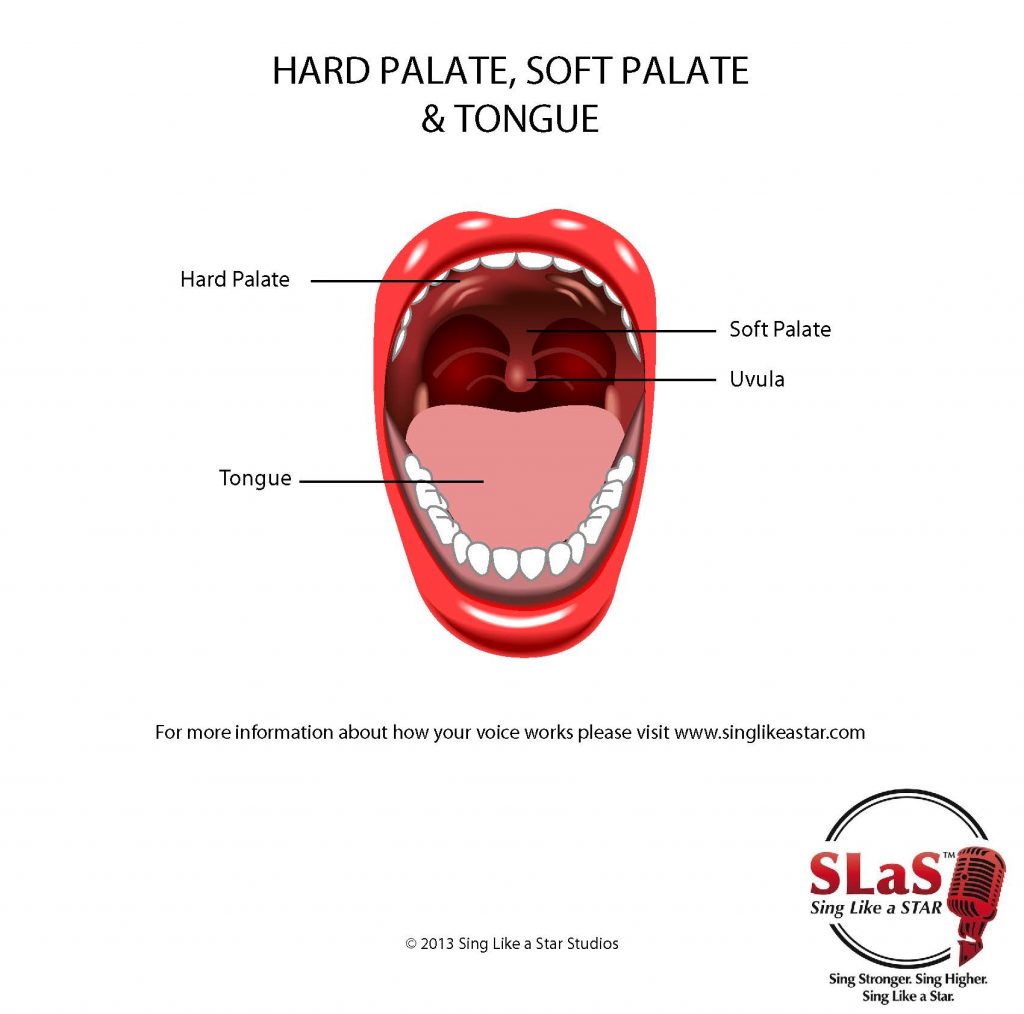How to Stop Singing Through Your Nose: Correcting Nasality in Singing


Nasality is due to a lowered or lazy soft palate. When the soft palate lifts (as when you yawn), it blocks the velopharyngeal port and prevents air from entering the nasal cavity. When the soft palate lowers, air passes through both the mouth and nose, creating nasalized vowels.
EXPERIENCE IT: SOFT PALATE MOVEMENT
To experience the difference between a raised and a lowered soft palate, first yawn, feeling the soft palate rise. While maintaining the yawn position, say muh.
Next, allow the soft palate to droop and the tongue to rise, and, like a baby crying, say waaaaaaaahhhhhhh, feeling the vibration in the nose area.
See?
You can and do control the movements of the soft palate to produce widely differing vocal sounds.
POSITIONS OF THE SOFT PALATE
Hyper Nasality: a droopy, lowered soft palate allows air to move out through the nose. This “lazy” soft palate is similar to the lack of distinct diction common to the deaf.
Hypo Nasality: when we raise the soft palate too much, there is a complete block of the velopharyngeal port, resulting in a stuffed-nose sound, like when we have a cold and all the nasal passages are blocked.
CORRECTING HYPER-NASALITY
We counteract hyper-nasality by initiating a yawn. This is known as the incipient yawn; incipient means beginning to come into being. At the beginning of a yawn, the soft palate is not tensed- just slightly lifted. A raised soft palate closes the velopharyngeal port, preventing the breath from escaping into the nasal passages and creating more space in the pharynx.
Once you have initiated the incipient yawn:
• Vocalize on a 5-tone scale on the syllable bwub, which creates an inverted megaphone shape in the pharynx and prevents air from escaping through the nose.
• Sing, on a single pitch, a sustained w[o] and pinch your nose. When the sound is the same whether the nose is pinched or not, excess nasality has been eliminated.
• Vowel Sequence: once w[o] is working try singing the following vowel sequence on a single pitch while pinching the nose: w[o]…wuh…w[ʊ]…w[ei]..w[æ]. If nasality does not return, you are successful!
• Consonants: Plosive consonants like K, followed by vowels, have the effect of increasing air pressure in the vocal tract and lifting the soft palate slightly, closing off the nasal passages and reducing nasality. Speak the syllable k[u]. Now sing an ascending arpeggio (1-3-5-8-5-3-1) on k[u]. You should notice your soft palate lifting slightly- just enough for good vocal production.
Stay away from the nasal consonants M, N, NG until you can maintain the correct vocal tract formation on the vowel sequence exercise w[o]…wuh…w[ʊ]…w[ei]..w[æ].
CORRECTING HYPONASALITY
On the opposite end of the spectrum is the singer who sounds dull due to insufficient nasal resonance- the hypo-nasal singer. We want some activation of the nasal resonance- just not too much! To find the right balance of bright and dark resonances (chiaroscuro or squillo-oscuro), with students who sound dull, as if they have a cold that is blocking the sinuses, try this exercise:
Phonate on an NG sound, then open up into [ae]: NNNNNNNGGGGGG[ae]. This will create mask resonance and a brighter, more ringing quality. Use your ear to achieve the right balance of chiaro (bright) and oscuro (dark) resonance.
The hypo-nasal singer will also be helped by the French nasal vowels combined with M: m[ɑ̃], m[ɛ̃]. These vowels are formed with a slightly lowered soft palate. The French nasal vowels are a particularly good tool for encouraging register connection; however, an extremely nasal vocal tone is not commercially viable, except in country singing.
In the image below the soft palate is lifted a bit as if the singer is just about to yawn. This is the incipient yawn that produces a richer tone quality and counteracts nasality.

NASALITY VS TWANG
Now let’s talk about twang, a phrase coined by Jo Estill. Twang is sometimes confused with excess nasality. It is important to remember that twang is not a nasal sound since nasality is created with a lowered velum (soft palate) that allows air to escape through the nose. Twang, in contrast, does not depend on the nasal cavities, but on the narrowing of the epilarynx tube, along with some narrowing of the pharynx (compared to classical singers).
If you would like to learn more about your voice AND learn to sing from home for less than you probably spend for lattes every month, check out our amazing YOU can Sing Like a Star online subscription courses for singers and voice teachers.
You can learn to sing with a self-study method- IF it's the right method. The ONLY method that can take you from beginner to professional is the YOU can Sing Like a Star online subscription course with over 600 recorded exercises.
This is the best method available and the ONLY method that takes you all the way from beginner to professional singer- for far less than the cost of in-person voice lessons!
Check this amazing course out at YOU can Sing Like a Star online subscription course.
If you are a voice teacher who wants to up your game, check out the YOU can be a Successful Voice Teacher online subscription course
With over 600 recorded exercises, including Riffs and Runs- Style, you don't need to be a great pianist or vocal stylist to be a great teacher!



